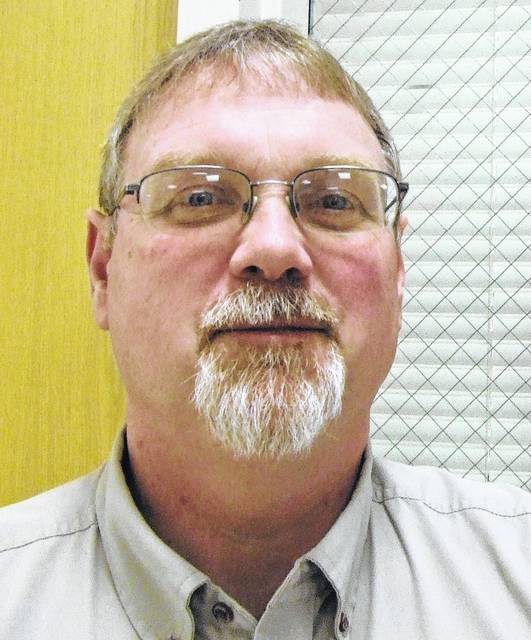
Agriculture continues to get more complex every year.
No longer do farm families just till the land, plant the seed, watch it grow, harvest the crop, and sell or use the crop. Today it is about science, technology, marketing, water quality and environmental stewardship, world trade and emerging markets — and the list could go on and on.
One of the hot topics today that many farmers are trying to better understand is the area of carbon credits and carbon sequestration.
Reducing environmental impacts and achieving climate sustainability is a huge topic of discussion and agriculture has become a central part of the discussion because the agricultural sector is capable of delivering natural climate solutions.
Experts suggest agricultural producers across the nation are capable of reducing carbon emissions by implementing “climate-smart” farming practices that sequester carbon.
Recently an article by Peggy Hall, Associate Professor, Agricultural & Resource Law at Ohio State University, looked at the idea of Carbon as a commodity for agriculture.
Hall notes, “While carbon markets aren’t new, recent proposals in Congress and announcements by the Biden administration are raising new interests in them. Some companies are actively pursuing carbon trading agreements with farmers, further fueling the discussion in the agricultural community.”
Like anything, with a new idea comes many questions and concerns. The first one of course is: Do carbon sequestration practices have real potential as an agricultural commodity? Hall says that is a tough question right now and the answers are not real clear yet.
In her article she notes there are answers for other questions, though, as well as resources that may be helpful for those considering carbon markets for the first time.
Here is what she provided:
• What is a carbon market? A carbon market revolves around carbon credits generated by carbon reduction practices. In the farm setting, a producer who either lowers the farm’s carbon emissions or captures carbon through “sequestration” practices can earn carbon credits.
Like other markets, a carbon market involves a transaction between a seller and a buyer. The seller sells a carbon credit to a buyer who can use the carbon credit to offset or reduce its carbon emissions.
• Do carbon markets already exist? Yes, although they may be private markets with varying names occurring in different regions.
Bayer Crop Sciences began its Carbon Initiative last year, paying producers for adopting carbon reduction practices that will help Bayer reach its goal of reducing its greenhouse gas emissions by 30% in 2030. Indigo Ag began entering into long-term carbon agreements with producers in 2019, paying $15 per ton for carbon sequestration practices.
Food companies and agribusinesses including McDonald’s, Cargill, and General Mills formed the Ecosystem Services Market Consortium, which will fully open its private carbon market in 2022.
• Are legal agreements involved? Yes. Using a written agreement is a common practice in carbon market transactions, but the agreements can vary from market to market.
Provisions might address acceptable practices, calculating and verifying carbon reductions including third-party verification, sharing data and records, pricing, costs of practices, minimum acreage, and contract period.
As with other legal contracts, reviewing a carbon agreement with an attorney is a wise decision.
The Biden administration has expressed interest in developing a federal carbon bank that would pay producers and foresters for carbon reduction practices. The USDA would administer the bank with funding from the Commodity Credit Corporation.
Rumors are that the bank would begin with at least $1 billion to purchase carbon credits from producers for $20 per ton. The proposal is one of several ideas for the USDA outlined in the administration’s Climate 21 Project.
• What is Congress proposing? The bipartisan Growing Climate Solutions Act would require USDA to assess the market for carbon credits, establish a third-party verifier certification program overseen by an advisory council, establish an online website with information for producers, and regularly report to Congress on market performance, challenges for producers, and barriers to market entry.
An initial $4.1 million program allocation would be supplemented with $1 million per year for the next five years. The Senate Agriculture, Nutrition and Forestry Committee has already passed the bill.
The Rural Forest Markets Act, also a bipartisan bill, would help small-scale private forest landowners by guaranteeing financing for markets for forest carbon reduction practices.
• Is there opposition to carbon markets? Yes, and skepticism also. For example, dozens of organizations urged Congress to “oppose carbon offset scams like the Growing Climate Solutions Act” and argued that agricultural offsets are ineffective, incompatible with sustainable agriculture, may further consolidate agriculture and will increase hazardous pollution, especially in environmental justice communities.
The Institute for Agriculture & Trade Policy also criticizes carbon markets, claiming that emission credit prices are too low and volatile, leakages and offsets can lead to accountability and fraud issues, measurement tools are inadequate, soil carbon storage is impermanent, and the markets undermine more effective and holistic practices.
Almost half of the farmers in a 2020 Iowa Farm and Rural Life poll were uncertain about earning money for carbon credits while 17% said carbon markets should not be developed.
To learn more about carbon markets, the National Agricultural Law Center, (https://nationalaglawcenter.org/) has several resources and recorded webinars.
There are many other resources available out there so do some homework. It looks like there is more to discuss and learn on carbon markets.
Tony Nye is the state coordinator for the Ohio State University Extension Small Farm Program and has been an OSU Extension Educator for agriculture and natural resources for over 30 years, currently serving Clinton County and the Miami Valley EERA.


